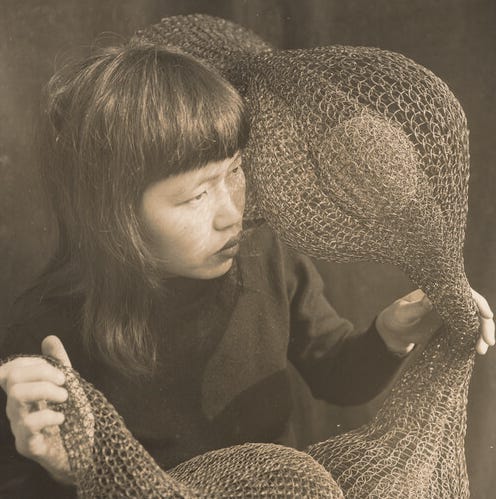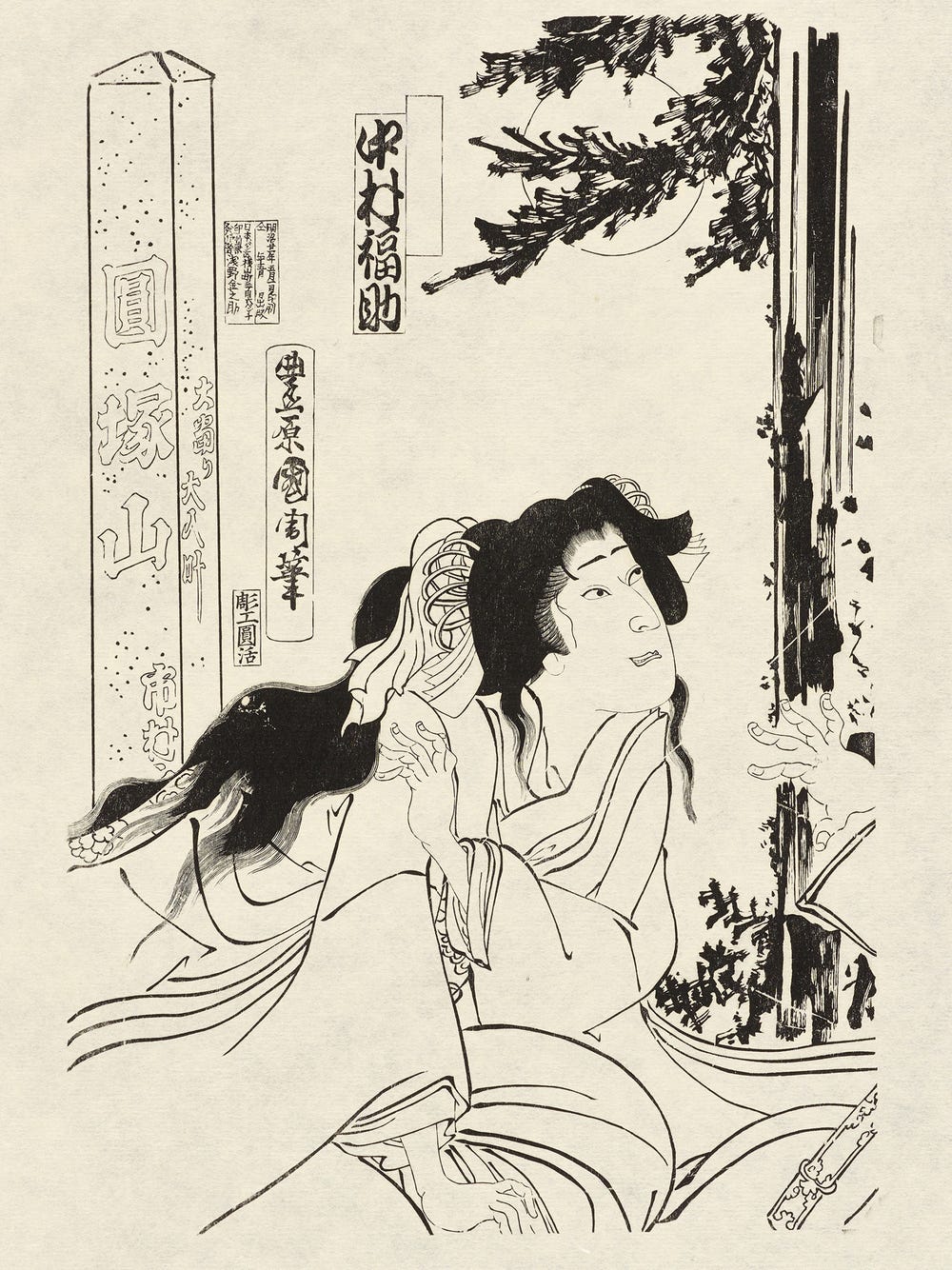Judy Chicago and the Teaneck Seven: The Needlepoint Artists Behind “Birth Trinity”
By Susan Bloomenstein, Janna Keegan, and Laura Camerlengo
January 4, 2022
In the Birth Project (1980–1985), Judy Chicago wanted to call attention to a universal experience not commonly depicted in the arts: childbirth. While researching, she was struck by the lack of images showing crowning—the moment when a baby’s head becomes visible in the birth canal. Chicago’s Birth Project highlights media—weaving, embroidery, and crochet—historically devalued for its association with women’s handiwork.
To complete Birth Trinity (1983), a massive work stretching over 10 feet in length, Chicago employed needlepoint artists who worked collaboratively to execute Chicago’s design. Here, artist and designer Susan Bloomenstein, a member of the group, shares her experience working on Birth Trinity.
Who were the members of the Teaneck Seven? How did you develop your name?
The members of the Teaneck Seven are the ones listed on the documentation for Birth Trinity in the Judy Chicago retrospective at the de Young museum [Susan Bloomenstein, Elizabeth Colten, Karen Fogel, Helene Hirmes, Bernice Levitt, Linda Rothenberg, and Miriam Vogel]. All of us were members of the League of Women Voters in Teaneck, New Jersey. When I returned from working with a group of women in Benicia [California] on the Birth Project, I asked those interested to join me in doing a piece for Judy. Our name was created in the spur of the moment at Doubleday Publishing in New York City, when the receptionist asked for the name of our group. Henceforth, we became the Teaneck Seven.
Judy Chicago, Birth Trinity: Needlepoint 1, 1983. Needlepoint by Susan Bloomenstein, Elizabeth Colten, Karen Fogel, Helene Hirmes, Bernice Levitt, Linda Rothenberg, and Miriam Vogelman. Needlepoint, 57 x 138 x 2.5 inches. The Gusford Collection, Los Angeles. © Judy Chicago / ARS, New York. Photo © Donald Woodman / ARS, New York
Can you tell us about your artistic practices prior/adjacent to working as the Teaneck Seven?
I had been doing needlework my whole life. At the time I heard about Judy Chicago, I was stitching with yarn on canvas with stitches I created to make textural wall pieces.
How did you hone your artistic skills?
I never went to an art school formally, but I took various courses in art and craft over the years. I worked in enameling for a while, and batik and yarn.
Were you aware of who Judy Chicago was before you signed on to work with her? How did you become involved in the Birth Project?
I first heard about Judy Chicago when I went to see The Dinner Party at the Brooklyn Museum. It was wonderful! So when I heard that Judy was looking for stitchers for her new series, the Birth Project, I arranged to go to Benicia, California, and work on a portion of a piece that was being done at her studio. After that visit, Judy sent the [Birth Trinity] canvas to me, and the Teaneck Seven was formed.
What particularly (e.g., foregrounding feminist issues, creating a visual vocabulary around birth, the medium) drew you to the Birth Project?
While we were independent women, our major interest in this project was not feminism. It was stitching! We all loved to do it. We had a wonderful time together—working together, talking together, sharing lunch. We found it easy to cooperate with each other and to work together for the good of the piece.
How did Judy communicate the plans for Birth Trinity?
She sent the canvas with her drawing in full color to me. We were all asked to do a sampler of our stitching work and since we were so good, we suited Judy and became a group of stitchers.
Judy Chicago, Earth Birth, from the series Birth Project, 1983. Sprayed Versatex and DMC floss on fabric, 603/4 × 1321/4 in. (154.3 × 335.9 cm). Quilting by Jacquelyn Moore Alexander. Collection of Longlati Foundation, China. © Judy Chicago / Artists Rights Society (ARS), New York. Photograph © Donald Woodman / ARS, New York
Can you describe, from a technical perspective, how you achieved the shading and color in these artworks?
We tried to stay as close as we could to Judy’s colors. We taught ourselves how to blend the yarn in the needle to create the blended colors of the design. [To blend] we put strands of different shades into one needle. They were not twisted; they were all straight and lay side by side, and they worked together to create a different color or shade. It was like painting with yarn—blending the colors in the needle and then in the eye. For each area of the piece, we had to figure out the right blend of color. It was very exacting and rewarding to us all.
How did you all work collaboratively on this endeavor? Can you describe how you were physically arranged in your work space?
We all worked around the dining room table in my house in Teaneck. The piece was large, as you can see, and so was the table. There was room for all of us to sit around the table and work on a portion of the design at the same time.
Did you experiment with different materials (for example, threads) in the process of making? Or were the materials determined at the outset of the project?
The canvas was a large-gauge size, and we used large needles that could hold many strands of yarn at the same time.
How long did it take you to finish Birth Trinity?
We worked two or three days a week for about two years, and had quarterly meetings with Judy in New York City, at my house in Teaneck, and finally in Benicia.
What were the greatest opportunities or challenges you encountered working on this project?
We did have times when a section did not seem right to us—usually to all of us—and we picked out the stitches and tried again. We were very proud of the finished product.
David Goldman, Tapestry binds its makers, South Central Bergen Your Town Record, January 1, 1990. Image courtesy of Susan Bloomenstein
How, if at all, did working on Birth Trinity impact your later work as an artist?
After Birth Trinity was completed, four of the Teaneck Seven created a group called the Tapestry Workshop. The four were Liz Colten, Karen Fogel, Bernice Levitt, and me. We worked together stitching wall hangings and pillow covers using some of the techniques we developed while working on Birth Trinity. We showed our work, sold it, and were generally successful.
Are you still a practicing artist today? Can you tell us about your recent work?
For the past 15 years I have been designing on the computer—designs for fabric and paper goods. These have been sold through various websites. The major one right now is Spoonflower, which is a fabric company that prints on demand.
Interview by Janna Keegan, assistant curator, contemporary art, and Laura Camerlengo, associate curator, costume and textile arts, in conversation with artist Susan Bloomenstein.
Judy Chicago: A Retrospective is on view at the de Young from August 28, 2021 through January 9, 2022.








